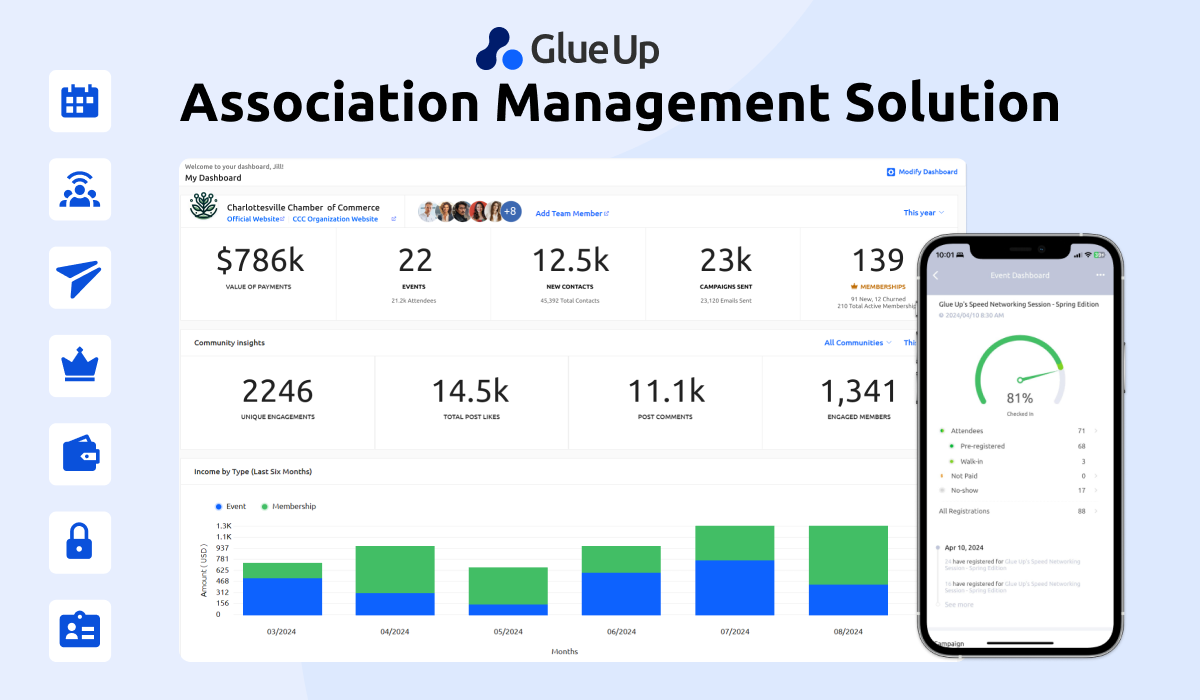
An organization relies on both the executive committee and the board of directors to operate effectively, yet the lines between their roles can sometimes blur, leading to overlapping responsibilities and a lack of clarity.
Both bodies are integral, each bringing its unique focus: the board provides long-term strategic direction and governance, while the executive committee addresses immediate operational needs. Understanding these distinctions is crucial for streamlined decision-making and effective governance.
Here, we explore the roles, structures, and key differences between these two governing bodies, shedding light on how each contributes to a well-functioning organization; this might clarify many of your basic concepts, so read on to gain firsthand insights.
Key Takeaways
- Defining roles for the board and executive committee prevents overlap, boosting efficiency and governance.
- The board manages long-term strategy, while the executive committee addresses day-to-day operations.
- A clear structure ensures accountability, with the executive committee reporting to the board.
- Defined roles allow each group to make timely, data-driven decisions that align with organizational goals.
- Glue Up provides tools that strengthen collaboration, governance, and efficiency for both the board and executive committee.
Understanding the Executive Committee

An executive committee is a smaller subset of the board of directors tasked with specific, often high-level responsibilities within an organization. Its primary purpose is to make quick decisions, manage urgent issues, and ensure the smooth operation of day-to-day activities when the full board isn't convened.
Generally, the executive committee consists of a select group of senior board members, allowing for efficient decision-making. The size of the committee can vary depending on the organization's needs, but it often includes important roles that bring diverse expertise to address pressing issues quickly.
Structure of the Executive Committee
The structure of an executive committee usually includes a few important positions:
- Typical Members: Core roles often include the Chair, Vice Chair, and Treasurer, among others who have a direct impact on organizational performance. These members bring leadership, financial tracking, and operational insight, confirming the committee covers all critical areas.
- Reporting Structure and Frequency of Meetings: The executive committee reports to the full board, keeping them informed of any major decisions and operational updates. Meetings are often held more frequently than full board meetings, such as monthly or bi-weekly meetings, to stay updated on immediate priorities and organizational needs.
Understanding the Board of Directors

The board of directors is an organization's primary governing body, responsible for setting its overall direction and certifying its long-term success.
Comprised of individuals elected or appointed to represent shareholders or stakeholders, the board plays a central role in upholding the organization’s mission, vision, and values. Its main purpose is to guide the organization strategically and hold the executive leadership accountable, marking that decisions align with both financial and ethical standards.
This overarching governance role makes the board of directors essential to an organization’s integrity and growth.
Structure of the Board of Directors
The Board’s structure usually includes a variety of roles to cover its diverse responsibilities:
- Typical Board Members: Common positions include the Chair, who leads the Board; the Secretary, who manages records and communication; and Independent Directors, who bring external expertise and an unbiased perspective. Independent Directors play a critical role in guaranteeing balanced and objective decision-making.
- Frequency of Meetings and Involvement with the Executive Committee: The board generally meets less frequently than the executive committee, often on a quarterly or bi-annual basis, but with a focus on high-level strategy and oversight. The Board also receives regular updates from the executive committee to stay informed on urgent matters and operational progress, ensuring that both bodies work in alignment.
Key Differences Between the Executive Committee and Board of Directors
Let’s explore the important differences between these two essential governing bodies. Understanding these distinctions will clarify their unique roles and how each contributes to the organization’s overall success.
Scope of Responsibilities
- Executive Committee: The committee focuses on day-to-day decisions and handling urgent matters that require quick responses. This includes overseeing daily operations, monitoring immediate issues, and ensuring that the organization runs smoothly on a practical level.
- Board of Directors: In contrast, the board is responsible for setting the organization's long-term vision and strategic direction. Its responsibilities extend to policy-setting and oversight, ensuring that the organization remains aligned with its mission and objectives over time. This broader scope gives the board a vital role in shaping the organization's future.
Authority and Decision-Making Power
- Executive Committee: While the committee holds decision-making power, its authority is limited by the framework and guidelines set by the board of directors. This means that the committee can act within specific boundaries, particularly on operational matters, but the board must approve larger, high-stakes decisions.
- Board of Directors: The board of directors holds the final authority on all organizational decisions. This ultimate decision-making power enables the board to set policies, approve budgets, and make high-impact choices. The Board’s decisions shape the overall direction of the organization, reinforcing its role as the primary governing body.
Reporting and Accountability
- Executive Committee: The executive committee operates under the board’s oversight and is accountable to it. It regularly reports to the Board, keeping them informed on operational updates and urgent matters handled on the board’s behalf.
- Board of Directors: As the governing authority, the board of directors oversees the committee and holds final accountability for the organization’s success. Evaluating the committee’s work and decisions helps the board mark that the organization’s actions remain aligned with its strategic goals and values.
Benefits of a Well-Defined Executive Committee and Board of Directors

Establishing clear roles and responsibilities between the executive committee and the board of directors is important, but this clarity also brings added benefits. Let’s explore what these benefits are and how they contribute to organizational success.
Improved Efficiency and Governance
Clearly defined roles for the executive committee and board of directors lead to greater efficiency in both daily operations and long-term decision-making.
The executive committee manages immediate issues and operational tasks, allowing the organization to respond swiftly to changes or challenges without requiring full board involvement.
A streamlined approach reduces bottlenecks and enhances governance, enabling each body to focus on its unique responsibilities.
Enhanced Accountability and Strategic Focus
Separating immediate decision-making from long-term strategy offers significant benefits to organizational effectiveness.
The executive committee’s focus on operational tasks frees the board of directors to concentrate on broader, strategic objectives without distraction from day-to-day issues.
This division enhances accountability, as each group is responsible for its specific role. It also promotes a strong strategic outlook, helping the organization stay aligned with its goals over time.
Strengthened Communication and Cohesion
Defined roles create more structured and focused communication between the executive committee and the board of directors.
Each group can share relevant updates, feedback, and insights within its scope, promoting collaboration that aligns operational actions with strategic goals and results in a more cohesive organizational strategy.
How Glue Up Strengthens Board and Executive Committee Performance

Both the board of directors and the executive committee are essential for any association's success. So why not equip them with a better platform and advanced tools to exercise their expertise and commitment?
Glue Up, the first global AI-powered AMS, significantly benefits both the board and executive committee by enhancing collaboration, streamlining decision-making, and boosting overall association efficiency.
Here’s how Glue Up supports each group:
For the Board of Directors
- Centralized Document Storage provides easy access to important documents, policies, and meeting notes, allowing board members to stay informed and prepared for strategic discussions.
- Meeting Scheduling and Agendas: The AMS simplifies planning with built-in scheduling tools and shared agendas, confirming that meetings are organized and focused on high-priority items.
- Performance Tracking and Reporting: Delivers real-time access to membership data, financial reports, and other key metrics, supporting informed decision-making and long-term planning.
- Compliance and Governance Tools: These tools maintain regulatory compliance with record-keeping and tracking features, making it easier to adhere to governance standards.
For the Executive Committee
- Task and Workflow Automation: The automation process automates routine tasks like member onboarding, renewals, and communication, allowing the executive committee to concentrate on immediate operational priorities.
- Real-Time Communication: The solution facilitates quick, effective communication among committee members through chat, notifications, and email integration, which is essential for addressing urgent matters.
- Member Engagement Insights: Tracks member engagement and satisfaction metrics, helping the committee to respond swiftly to emerging needs and optimize day-to-day operations.
- Event and Meeting Management: Eases event organization, virtual conferences, and updates, enabling the committee to handle activities efficiently without logistical delays.
Glue Up empowers the board and executive committee by supporting them with strategic and operational functions; it supports effective collaboration, data-driven decision-making, and a sharper focus on their unique roles within the organization.
Many associations are already capitalizing on Glue Up’s management and analytics tools. If you’re considering ways to improve your board, executive committee, and overall organization, booking a demo with Glue Up could be the ideal next step.



